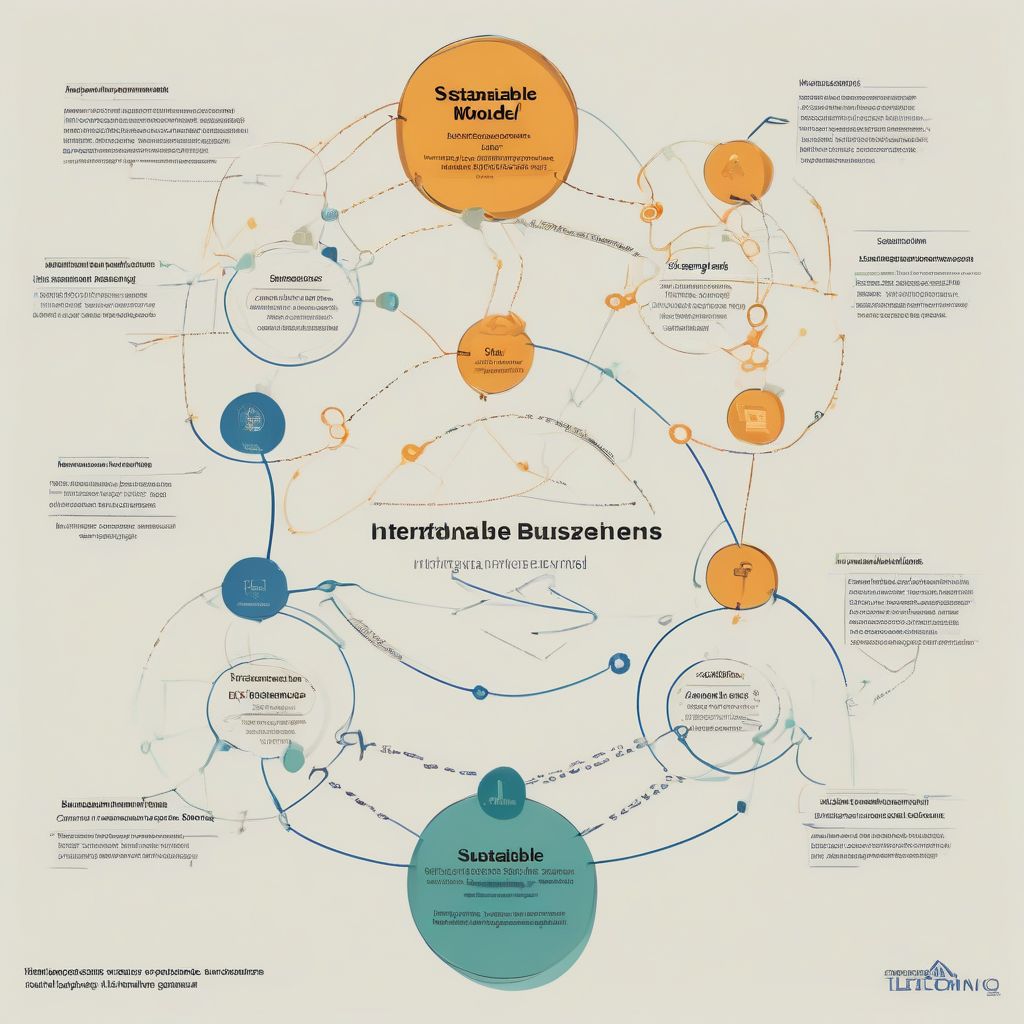Imagine this: you’ve poured your heart and soul into creating a fantastic product or service, your startup launches to rave reviews, but in a few short months, the excitement fizzles, and you’re struggling to keep the lights on. This nightmare scenario is all too common for many new businesses. The culprit? Often, it boils down to an unsustainable business model.
A sustainable business model isn’t just about making money; it’s about creating a system that generates consistent profits while positively impacting your customers, community, and the planet. It’s about building a business that thrives long-term, not just survives.
Understanding the Core Components of a Sustainable Business Model
Building a sustainable business model starts with understanding its core components and how they work in harmony:
1. Value Proposition: Solving Real Problems for Your Target Audience
At the heart of every successful business lies a compelling value proposition. What pressing need are you addressing for your target customers? What problem are you solving better than anyone else?
Example: As a nutritionist and meal prep coach, my value proposition is clear: I help busy individuals achieve their health goals through personalized meal plans and easy-to-follow strategies, eliminating the stress of meal planning and cooking healthy meals.
2. Revenue Streams: Identifying Multiple Avenues for Income
Next, determine how your business will generate revenue. Will you rely solely on product sales, or can you explore additional income streams like:
- Subscriptions: Offering recurring meal plans tailored to specific dietary needs.
- Workshops/Courses: Teaching meal prepping and healthy cooking techniques.
- Digital Products: Creating and selling e-books or online resources.
Diversifying your income streams creates financial resilience and cushions your business against market fluctuations.
3. Cost Structure: Understanding Your Expenses and Streamlining Operations
Take a hard look at your cost structure. Identify your fixed and variable costs and explore ways to optimize and streamline operations without compromising quality.
For example: Could you partner with local farms for fresh produce at lower costs? Can technology streamline client communication or automate repetitive tasks?
4. Customer Segments: Defining Your Ideal Customer
Clearly define your target audience. Who are you trying to reach? What are their needs, pain points, and aspirations?
Knowing your ideal customer allows you to tailor your offerings, marketing messages, and customer service to resonate deeply with your target market.
5. Key Activities: Focusing on What Drives Results
Identify the crucial activities that drive your business. This could include:
- Content creation: Sharing valuable recipes, nutritional tips, and meal prep strategies.
- Community building: Fostering an online community where clients connect and support each other.
- Partnerships: Collaborating with fitness studios or wellness practitioners to expand your reach.
6. Key Resources: Leveraging Your Strengths and Assets
Recognize your most valuable resources. These could be tangible assets like your website and kitchen equipment or intangible assets like your expertise, network, and brand reputation.
7. Customer Relationships: Cultivating Trust and Loyalty
Focus on building strong, lasting relationships with your clients. This could involve:
- Personalized communication: Sending tailored emails or offering one-on-one consultations.
- Exceptional customer service: Promptly addressing queries and going the extra mile to exceed expectations.
- Loyalty programs: Rewarding repeat customers with exclusive discounts or offers.
8. Key Partnerships: Strategic Collaborations for Growth
Identify potential partners who can help you reach new customers, enhance your offerings, or streamline your operations.
For example:
- Partnering with fitness apps to integrate your meal plans.
- Collaborating with local gyms to offer healthy cooking workshops.
- Teaming up with influencers in the health and wellness space.
9. Sustainability: Integrating Environmental and Social Responsibility
Today’s consumers increasingly seek businesses aligned with their values. Incorporate sustainability into your model by:
- Sourcing local and organic ingredients whenever possible.
- Minimizing food waste in your meal prep processes.
- Using eco-friendly packaging materials.
- Giving back to your community through workshops or donations.
Key Questions to Ask When Building Your Model:
- Is there a real need for my product or service?
- What problem am I solving for my target audience?
- How will my business generate consistent revenue?
- Who are my ideal customers, and how can I reach them effectively?
- What are my key activities, resources, and partnerships?
- How can I create a positive impact on my community and the environment?
 Sustainable Business Model
Sustainable Business Model
Conclusion: Building a Business That Thrives
Creating a sustainable business model is an ongoing process of refinement and adaptation. By understanding the core components, asking the right questions, and being willing to adjust your approach based on market feedback and your own evolving vision, you can build a business that not only survives but thrives, making a positive impact on your customers, your community, and the world around you.
Take the time to evaluate your current business model. Are there areas for improvement or opportunities for innovation? Remember, building a sustainable business is a marathon, not a sprint. By focusing on long-term value creation and impact, you can set your startup on a path toward enduring success.
[amazon bestseller=”sustainable business model”]
